Leaderboard
Popular Content
Showing content with the highest reputation on 04/22/2025 in all areas
-
5 points
-
7 hours later, the Goldstar RV Owner, Matt, took out the Xantrex Inverter, wired in the Victron Multiplus, programmed with the Victron MK3, wired up the Cerbo GX, and 50 Touchscreen, and we turned on the AC with the 840 amps of 3 280Ah Watt Cycle Lithiums. Oh Happy Days. Have gotten some good advice on where to mount the touch screen. May wait to do that at the rally, or when we get to the Mothership on May 5th. Would never have had this happen without a LOT of support from fellow Ollie Owners. Thanks so much. Hope to see you at the Rally. We are Site F27 in the Range Rover, Hull 292 Gary, Anita, and Ranger3 points
-
I have replaced several original touch lights with ones from Obeaming (Amazon), 4.5 inch . I used all the original holes after removing the rivets, using SS screws. My replacement lights are only a month old, so longevity is unknown. I found it much easier to complete the wiring after I removed the bottom panel in the upper compartments (hidden screws).3 points
-
I can probably vouch that everyone, including myself, trying to talk you out of an EV, don't particularly have any hate for them and we all mean well. If you are dead set on it, let us all move on. :)3 points
-
The new technology of the 2025 Ramcharger could be a game changer… ChatGPT: Does the 2025 Ramcharger need to recharge when the battery and gas has been depleted? Answer: “ No, the 2025 Ram 1500 Ramcharger does not require a public charger when both the battery and gas run out. It's designed as a plug-in hybrid with a 3.6-liter V6 engine acting as a generator to recharge the battery. This allows it to operate on electricity for a significant range and then transition to gas-powered operation when the battery runs low. Here's a more detailed explanation: Plug-in Hybrid System: The Ramcharger is a plug-in hybrid, meaning it has a large EV battery pack and a gas engine that acts as a generator. Generator Function: When the battery depletes, the gas engine starts a generator that produces electricity to recharge the battery, effectively eliminating the need for public charging stations. Electric Range: The truck has an estimated 145 miles of pure electric range. Combined Range: With a full battery and gas tank, the Ramcharger targets a combined range of up to 690 miles. Charging Options: While it can be plugged in to a DC fast-charger or use its onboard generator, it doesn't require frequent or long public charging sessions. “ The short answer is it is a powerful new technology that has quite the range even while towing. It is not reduced by 50% like the Tesla Cybertruck, etc. SO don’t count out EV trucks as tow vehicles. It only needs a refill of petrol just like any other gas or diesel truck but it is to power the generator to charge the batteries not the drivetrain. From the RAM-TRX forum: The Ramcharger combines a 92 kilowatt-hour battery pack with an onboard 130 kilowatt generator powered by a 3.6-liter Pentastar V6, according to the company. The upshot is a targeted 690 miles of range in a truck that promises 663 horsepower and 615 pound-feet of torque while it manages a 0-60 mph time of 4.4 seconds and towing of up 14,000 pounds. This is the way to go with an EV. All the benefits of the electric motor torque, power and daily convenience without the disadvantages of range limits and charging headaches on long trips.3 points
-
Dan, it's good you noticed this before it got worse. Check out my picture. The two carriage bolts, shiny round heads faced up, go straight down through the frame. Get under your Oliver just behind the wheel well and tighten the two large nuts. If there is a split-ring washer that has lost its spring, replace it. If not use some blue Locktite (not red). Then check the other side as well. Edit: If you find the main jack mounting bolts are tight which is highly possible, then the head of the jack has slipped up off the post. In this case, remove the head (2-3 Allen screws), check the post for vertical markings from it slipping to be certain of cause. Then remount head. Age of your hull, having it out would be a good time to do thorough maintenance. I'm the only one that has worked the complete service and if you will do so, let me know and I will supply the link. In the meantime, do not use your stabilizer jacks.2 points
-
B17, Steve and MA, Steve & Mary Allyn, Texas, “Un Œuf”, 9692 points
-
Where will you be camping mostly? Getting half of the 500 mile range towing an Oliver would be optimistic. With an EV you will severely limit travel routes and camping areas. If you are interesting in boondocking, EV charging presents a real challenge. Most of the areas and highways/roads in the western US aren’t EV charging friendly. Something to think about. Mike2 points
-
I recently completed yet another replacement of one of the touch-enabled LED lights...again. This the fourth one I have had to replace and the others are fickle as to how one must touch them to turn on and off. Of course many of you know the hassle of having to drill out and replace the rivets. Why rivets? So I seek input on two options to at least reduce the pain of the touch-enabled LED lights...or make it go away. Option 1. Has anyone replaced the existing bloody rivets system with screws or pass-through small bolts with washers & nuts? The small bolt option would require counter-sinking/boring space for the upper nut and washer...but doable. Going forward when the lights fail again the rivet hassle will be gone. Option 2. Replace all the touch-enabled LED lights with 12v lights with individual switches. No more fickle on and off light touches...just an on and off switch on each light. Has anyone done this or considered this option? (I thought that Oliver Inc was considering this option at one time.) Does anyone have a recommendation of a replacement light that would work for such a change? Please share your thoughts as to the feasibility of either or both options. (Did I mention that I do not like the Oliver provided touch-enabled LED lights and/or the use of rivets to install them?) Thanks1 point
-
One strip is enough to cover all four porch lights with enough left over to cover the bottom outside lights as well1 point
-
1 point
-
You can drill out the rivets easily - had to replace one of ours also. I would stay with a drill bit that is no larger than the rivet used, in my case 1/8". I then used a very short # 8 stainless panhead machine screw sized just long enough to hold the fixture and get through the inner hull but short enough to not pierce or distort the inner cabinet liner. Use an appropriate tap for the thread you chose. If you then need to pull the fixture at some point in the future you will not have to drill it out again - just back out the fastener and use it to install the new fixture. If you feel you have to use another pop rivet you can do that so long as the drill bit you used to remove the old rivet does not enlarge the hole.1 point
-
None of that matters! All the specs again do not matter. With a name like @DanielBoondock you must have dreams of Boondocking after your retirement. Boondocking and an EV truck just don’t fit, like oil water don’t mix. Also, whether you get 500 miles, you’re dreaming, or even 200 miles like the several comments above… Again, this spec doesn’t matter. The question is, do you want to spend every day, or every other day taking a detour just to charge? and wait, and wait… I’d rather fill a tank of diesel and drive 2,3,4 days without care and enjoy our travels. There’s not a National Park, nor state park, or RV park with level I EV chargers. You rig an EV charger and attach to the 30A or 50A service at a campground or RV park. I would call that stealing. It’s just this simple. No physics here, no 0-to-60 in 2 seconds, just the simple realities of travel. We can go 10 days off-grid with 600Ah LiFePO4, 720W solar, 3KW inverter, 32-gal FW in the Oliver and another 35-gal fresh in the truck and the LAST thing in the world we would want is to charge a stupid EV every other day, OMG! 🤣 You will trade in that toy after some real travel, get stuck somewhere without power and resale in EVs is not good, as who wants to get stuck with replacing batteries on a used EV?1 point
-
If there aren’t any Oliver’s living in your part of N CA, there might be an owner or two passing through on a trip. We’re planning a trip to Lassen and Redwood in August, then up to Crater Lake and the OR/WA coast. Mike1 point
-
Sorry, if you can slow down I can tell you a few things. I’d rather not have to, I’ve been down this discussion too many times but you started the discussion so I feel I have to address it. And I’m not trying to start a forum war, but I think you’re not aware of the facts. Any electric truck on the market has better HP and better torque than any ICE. 754 HP and 785 lb.-ft. of torque, from zero to full speed. What does an ICE Sierra have? 350, maybe 400. This is just physics. Now if you’ve ever driven one, or watched some videos this is a long established fact. Do you know the TFL channels? Old time truck guys with the biggest truck channels on YouTube, They cover EV trucks and constantly relate how they can’t even tell they’re pulling a trailer. No heating issues, they don’t even show the temps because they never change. These aren’t ICE - they have midsize payload (2k) and tow capacity (10k), with HD+ performance. On range sorry that’s just misinformed - a trailer affects range on a ICE or EV exactly the same - this is just physics. All the folks who are towing now, with these trucks are talking about their ranges on the forums and these are real numbers. In addition to no maintenance and lower running costs, they have other advantages. How would you like to not use your truck or trailer brakes going down the IKE? Or using a trailer gain of 2, because you can capture that energy back into the battery? Look, to be honest I’m not interested, if you don’t like EV’s or whatever that’s fine, I don’t care, people asked what I’m driving and I answered, I don’t need another lecture about ICE and don’t need to be tutored about a subject I’m well informed on, especially when I drive the damn things. I’m sure you mean well, but let’s just talk about the trailer OK? And to be clear I’m not soliciting unasked for advice about my tow vehicle. If we can drop that subject, I’m happy relating my experiences with this rig if anybody is interested. By the way I’ve driven ICE trucks my whole life and EV’s the last decade so have been on both sides of this equation and understand it intimately. ☮️1 point
-
Not sure this will help...I just experienced a failure of the light as well. I do not like the rivets either. I talked to Jason (Jason in parts department) and he informed me they discontinued the line of lights they were using and went to a new style that uses screws. It's the same diameter but the hole pattern is slightly different. I used one existing hole and had to drill the other 2 to mount it. The profile is different as the lens doesn't bow down like the old one did (see photos) I like it better as it's easier on the eyes because the lens is flat and not bowl shaped. Good luck! John It is still a touch light.1 point
-
I'm going to just tell you like it is. Forget that LIGHT-DUTY ELECTRIC PICKUP for towing. A 500 mile range towing? Not in your wildest dreams, maybe 150 miles. And why would you be planning a 500 mile day anyway? That's just crazy. Get yourself a capable ICE truck, at least a 3/4 ton, preferably diesel. Hitching and un-hitching is a simple matter of two chains and the coupler. We just bought our granddaughter a Tesla for her sixteenth birthday. I drove it, first time I've ever been in an electric car. It's impressive, 0-60mph in under 3 seconds. My 1970 Corvette with a monster engine was about twice that. I have no idea how long it would take our Silverado 3500 diesel pulling the Oliver to get to 60mph. Probably about 30 seconds or so. I don't worry about it, and anyway the whole rig weighs nearly 18K pounds. EV's are fun for around town and will get better with time. Just for fun, I went online and "built" one. Starting price is $92K. They are only available with a short bed (71 inches). Just be aware that a regular sized Clam enclosure will NOT fit in that bed unless it is placed diagonally (terrible for packing). I chose the Max Range Denali 4WD since I would be towing, Now I'm at $100.5K. I see that you CAN spend up to an extra $4k on exterior paint but I chose the no cost white. I hate that there is no other option on wheels/tires than 24". I would never be able to find a set of HD tires for it. Anyway it totaled out at $100,845. But, if I buy it before the end of the month and pay cash, I'll get a $3K Purchase Allowance leaving be owing $97,845 not including tax, title, license and dealer fees. I also spec'd out a very well equipped 1 ton Denali diesel with all the bells and whistles for comparison. It was "only" $88,270.1 point
-
No worries, but let's just say I'm a physicist/engineer so curing myself of overthinking is like curing a Soprano of her voice 😅 And anyhow I've been debating this the last five years so I'm down to the fussy details so don't be surprised to see me ask more oddball questions, but this is the home stretch. I'm retiring in a few years, and the schedule is I can get the truck this year and trailer next. The lineup has been Escape, Bigfoot and Oliver. The Ollie was my first choice, but I left it for the Bigfoot due to the Ollie size. But recently with the tariffs making Canadian trailer purchases interesting, I took a look again at Ollie and realized 'heck a true 24' 7' wide would be nice and easier to deal with'. And I'm tall, my head brushes the Bigfoot ceiling, but the Ollie is a great 6' 7" or thereabouts. Finally I'm an old sailor and love the fit/finish. So basically I've made probably a final decision which is the Ollie 👏but my wife still has to decide 🤔... main problem is I don't see any Ollies nearby (N. Ca). I'd probably buy sight-unseen, but getting her in one would help.1 point
-
I believe previously they used foil bubble wrap, but more recently (as of five years ago it seems) they're using Protex AD10 10mm 1/5” R22 insulation. This was taken from the following long video playlist with nerdy construction details. The bottom outer is wrapped, and the upper inner. Additionally for (all - some?) of the trailer there is an internal honeycomb material that is spray and fabric fiberglassed. This will have some R value due to those dead air pockets. As an engineer type I've thought about this design, it's interesting. Conventionally in a structure you want a single vaporbarrier with two climate zones. But having the double hull they have three, in trailer, in wall, and outside. This means that the between hull space is it's own climate and can potentially have condensation issues of it's own. This is why they added the drain holes along both sides. Normally that would be a poor design, but if you think about it, it's not much different from your attic or crawlspace. Both need air vents (ridge/soffet vents and foundation vents) to prevent humidity buildup, but also provide an insulation 'barrier zone'. In summer my roof will get to 100+ degrees, but I measure less than that in the attic. If I had a Protex barrier glued between the rafters, it should be roughly air temperature, which in a sense buffers the temperature from the roof which acts like a heat sink. For comparison consider, of all things, the James Webb Telescope design with it's five layers sun shield Now the inner space is heat conducting air and not insulation vacuum, but I'd think at least that should provide some buffering of the temperature gradient. Additionally, since the ducted heating runs along the water pipes below, during the winter at least that waste head isn't wasted - it goes into warming up the inner wall. And during the summer months, the outer takes the brutal heating from the sun which should be a lot of radiative, and the double foil deals with that. tl/dr ... basically I think it's possible it comes to some pretty high insulation R value given all these factors, maybe even R22. A test would be something like putting a trailer in some hot desert and seeing how long it takes to warm up an insulated box which is pressed/taped against the wall. It would give you a rough idea at least, should be pretty good I'd think.1 point
-
Site: F20 Handle: MobileJoy Names: Mike & Sue State: NC Trailer Name: Mojo Hull #: 8501 point
-
1 point
-
Yes, Jason and @CRM are correct! Since you like GMC, get the DURAMAX 6.6L TURBO-DIESEL V8 WITH ALLISON 10-SPEED AUTOMATIC TRANSMISSION! Wish I had an Allison 10-speed with exhaust brake attached to my 24-year-old Cummins! But we do have the Cummins 5.9 Diesel with a tuner for 5 performance fuel settings, economy, towing, etc. and the factory Camper package (rear helper springs like the 3500). The only charge station I've seen in all of Prescott AZ is a couple at the Ford Dealership and I think the Hilton also has a couple! Neither location allows trailers on their lots. And they don't have EV chargers 100 miles from where we normally camp. Honey, can you find the hook-up? The batteries are getting low! 🤣1 point
-
Yesterday we camped at Dark Sky outside of Kanab. Quite the upscale treat. For example the showers are full master baths with outdoor AND indoor showers, and heated tiled floors 😆 We also hiked The Wave with a guide from Dreamland Adventures. Overwhelmingly beautiful in every possible way. Then we went out for dinner to celebrate. And my wife noticed that the bolt that holds the Anderson chains to the hitch was missing 😳. Apparently the idiot who uncoupled the trailer (me) left it on the bumper. After an hour of panic, our guide from the hike gave us a replacement. How lucky are we? And finally, as we drove away from the campground this morning, we found the bolt on the street about a mile away 🤯 PS We saw our FOURTH Ollie in the wild today driving East between Zion and Kanab PPS Happy Easter to all 🐇1 point
-
@Dennis and Melissa Just a thought --- you have 7 nights planned at Dead Horse SP to visit Canyonlands and Arches. Both are amazing and Dead Horse is the best reserve campground for visiting Canyonlands and not too far from Arches. It's a good plan but one suggestion I might make is to use the app Campflare and see if a cancelation might pop up for Devil's Garden Campground inside Arches NP. Devil's Garden may be the most difficult to get campground in all of the national parks. It books up within seconds of the 6 month booking window. It does not have hookups, however. I put a notification request in Campflare last fall and scored a cancelation with a few weeks notice -- they do happen. If you were to score a site at Devil's Garden, it puts you deep inside the park in one of the most spectacular areas of scenery with a couple of the best hikes starting right from the campground. You wake up with an unbelievable sunrise right there. The photos attached are of the campground. The arch photo at sunrise is 100 yards from the campground (you can see RVs in the distance on left side of the photo). Dead Horse SP is very nice and centrally located but the campground is kinda out in the middle of sagebrush and you have to drive to get to hikes and views. Already being inside the park camping at Devils Garden means your're already there -- avoiding the lines at park entry and you are already there for the most awesome time in the park which is sunset/early mornings and late evening/sunset. Regardless, my biggest suggestion would be to plan on being in both parks early and late. The light is amazing and makes for unforgettable experiences. If you stay the whole time at Dead Horse SP, you will still have an amazing time!1 point
-
Recent Achievements






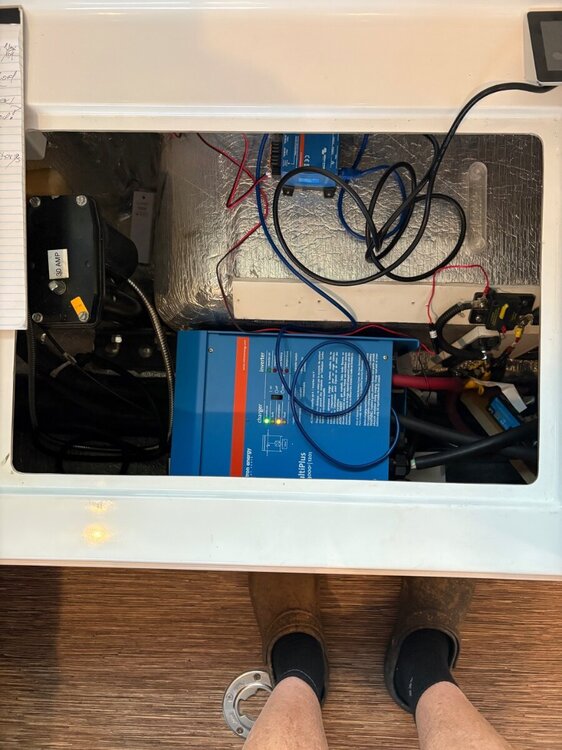

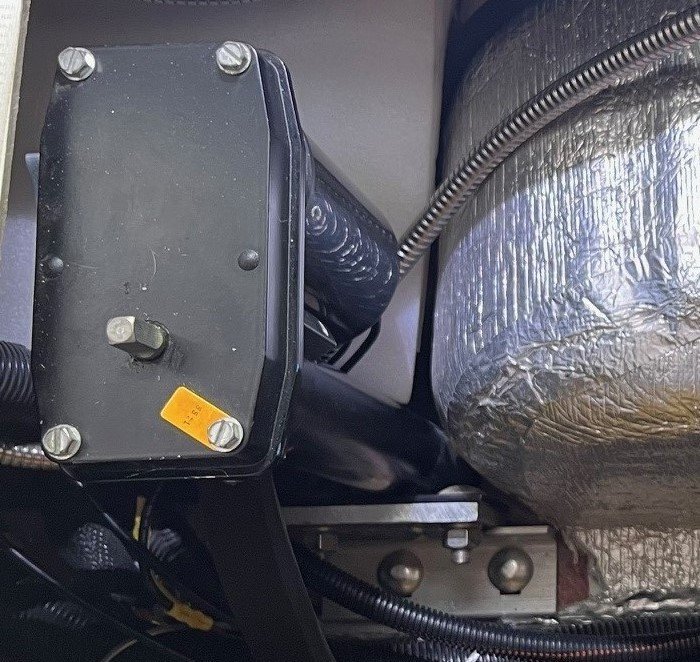




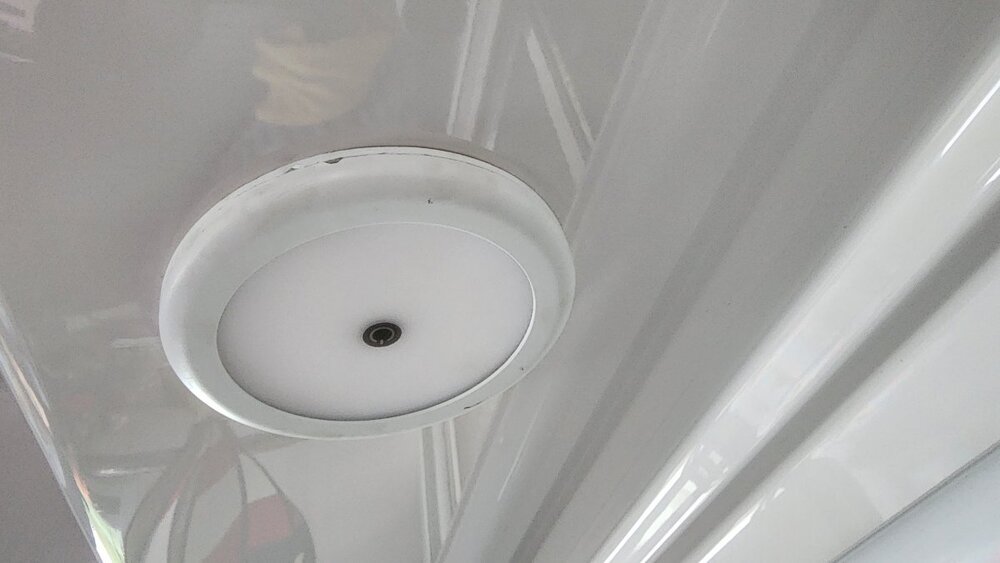



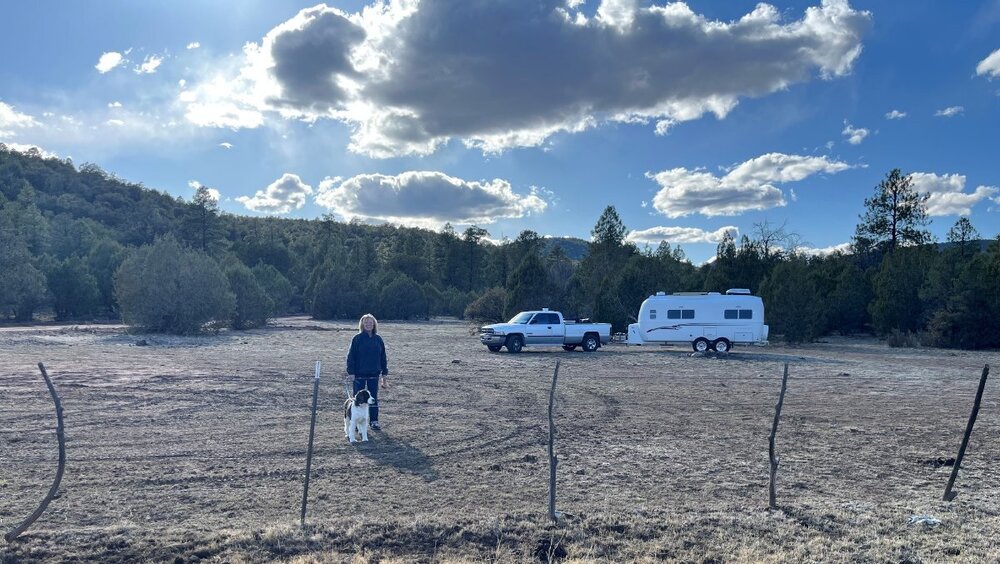


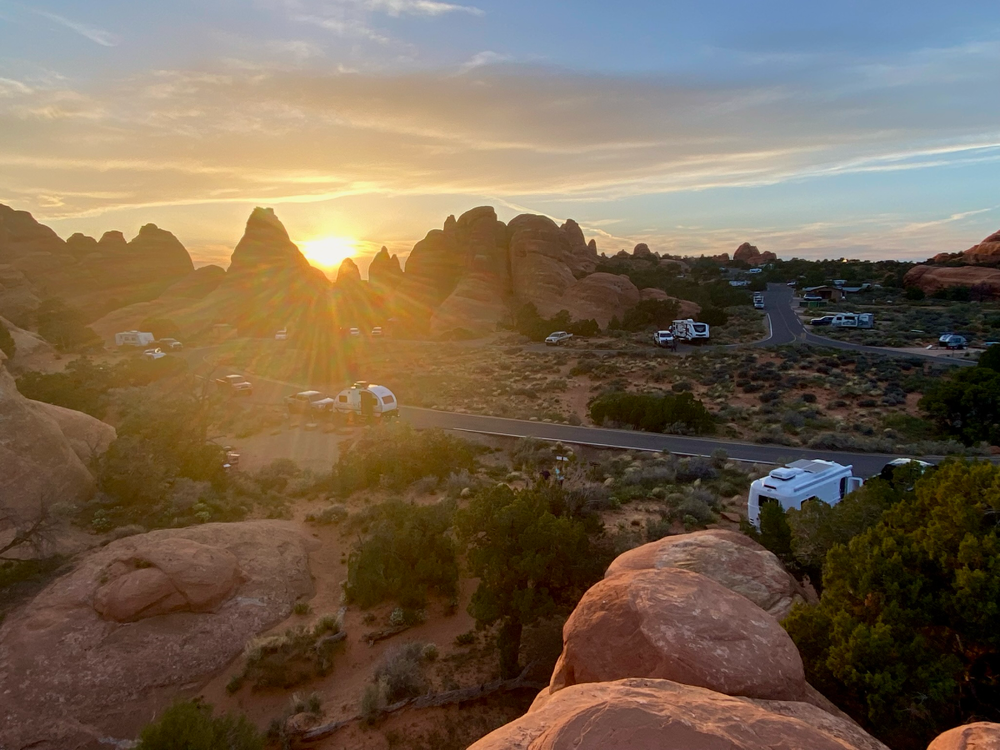


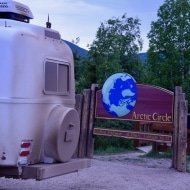
.thumb.png.eff4d7fbcbf1eb34d62e5c88cf70a0ee.png)